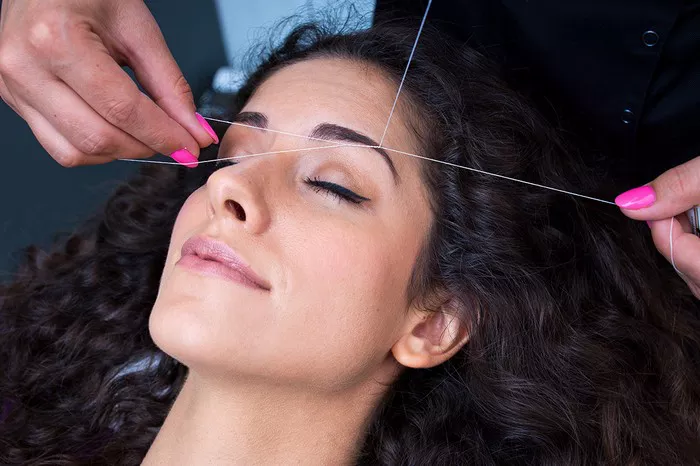Thread lift procedures have gained popularity in recent years as a non-surgical alternative to facelifts. This minimally invasive treatment involves inserting dissolvable threads under the skin to lift and tighten sagging facial tissues. While the thread lift is generally well-tolerated, it is natural to wonder about the level of pain involved in the procedure. In this article, we will explore the pain associated with a thread lift and provide insights into what patients can expect.
Understanding the Basics of Thread Lift
Before delving into the pain aspect, let’s briefly understand how a thread lift works. A thread lift involves the use of specialized sutures made from materials like polydioxanone (PDO). These sutures are strategically inserted into the deeper layers of the skin, where they provide support and lift to the facial tissues. The threads have tiny cones or barbs that anchor them in place, ensuring long-lasting results.
The procedure is typically performed under local anesthesia, meaning that the treated area is numbed, and the patient remains awake throughout the process. The threads are carefully inserted through small incisions or entry points, allowing the surgeon to create the desired lift and contour. Once inserted, the threads stimulate the production of collagen, a vital protein that improves skin elasticity and firmness.
The Pain Factor: What to Expect
One of the key advantages of a thread lift over traditional facelift surgery is the reduced level of pain and discomfort associated with the procedure. While individual pain tolerance may vary, most patients report experiencing only mild to moderate discomfort during and after the treatment. Let’s break down the pain factor into different stages of the thread lift process.
1. Anesthesia Administration
To ensure a comfortable experience, local anesthesia is administered before the thread lift procedure. This numbs the treatment area and minimizes any potential pain or discomfort. The anesthesia is typically injected using small needles, which may cause a slight pinch or stinging sensation. However, the discomfort is usually short-lived and well-tolerated by patients.
2. Thread Insertion
Once the anesthesia has taken effect, the surgeon will proceed with inserting the threads into the targeted areas. Although the concept of having threads inserted under the skin may sound uncomfortable, most patients describe the sensation as more of a tugging or pulling feeling rather than intense pain. Some individuals may feel slight pressure or mild discomfort during this stage, but it is generally manageable.
The surgeon will strategically place the threads to lift and tighten the desired areas, such as the cheeks, jowls, or brows. The number of threads required will depend on the individual’s goals and the extent of facial sagging. It is essential to communicate openly with the surgeon about any discomfort or pain during the procedure, as they can adjust their technique or provide additional anesthesia if necessary.
3. Post-Procedure Sensations
After the thread lift procedure, it is common to experience mild soreness, swelling, and bruising in the treated areas. These are temporary side effects that should subside within a few days to a week. Patients may also feel a slight tightness or pulling sensation as the threads settle into place and the tissues adjust.
Over-the-counter pain relievers, such as acetaminophen or ibuprofen, can be taken to manage any post-procedure discomfort. However, it is advisable to consult with the surgeon before taking any medication, as they can provide personalized recommendations based on the individual’s medical history and specific circumstances.
4. Recovery and Beyond
The recovery period following a thread lift is generally short and relatively comfortable compared to traditional facelift surgery. Most patients are able to resume their daily activities within a day or two after the procedure. However, it is important to follow the post-operative instructions provided by the surgeon to optimize healing and minimize any potential complications.
During the recovery period, it is advisable to avoid strenuous activities, excessive facial movements, and exposure to direct sunlight. Following a proper skincare routine and keeping the treated area clean can also contribute to a smooth recovery process. Any residual pain or discomfort should gradually diminish as the tissues heal, and the final results of the thread lift become more apparent.
Conclusion
While pain is a subjective experience that can vary from person to person, a thread lift is generally considered a relatively low-pain procedure. With the use of local anesthesia and the minimally invasive nature of the treatment, most patients report only mild to moderate discomfort during and after the procedure. The temporary soreness and sensations that occur during the recovery period are typically well-managed with over-the-counter pain relievers and subside within a short period.
It is important to note that every individual’s experience may differ, and it is advisable to consult with a qualified and experienced surgeon who can assess the specific circumstances and provide personalized guidance. By choosing a reputable professional and following post-operative instructions diligently, patients can undergo a thread lift with confidence, knowing that any potential discomfort is generally well-tolerated and outweighed by the benefits of a rejuvenated appearance.


